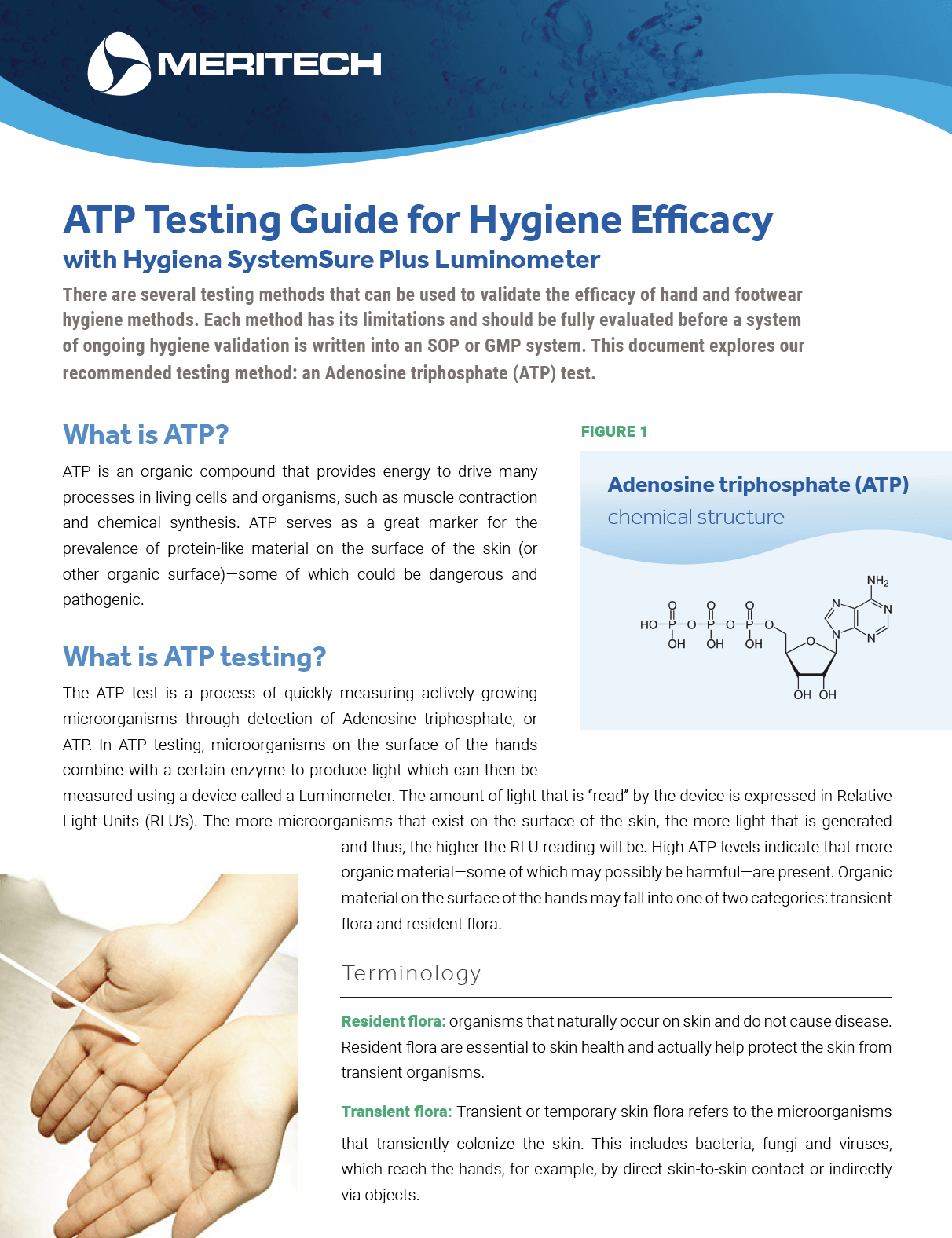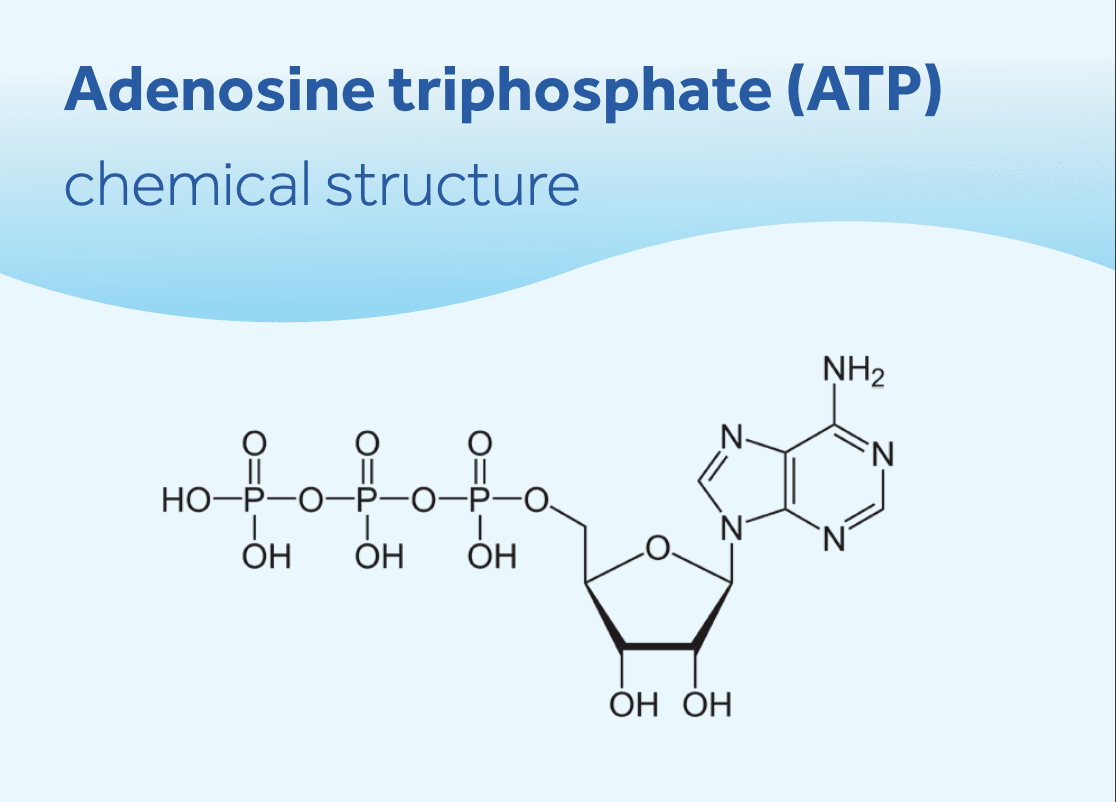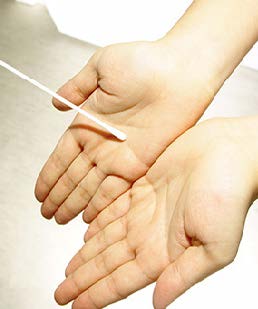ATP Testing Procedure for Hand Washing Validation
 There are several testing methods that can be used to validate the efficacy of hand and footwear hygiene methods. Each method has its limitations and should be fully evaluated before a system of ongoing hygiene validation is written into an SOP or GMP system. This blog will explore our recommended testing method: an Adenosine triphosphate (ATP) test using a Hygiena SystemSure Plus Luminometer.
There are several testing methods that can be used to validate the efficacy of hand and footwear hygiene methods. Each method has its limitations and should be fully evaluated before a system of ongoing hygiene validation is written into an SOP or GMP system. This blog will explore our recommended testing method: an Adenosine triphosphate (ATP) test using a Hygiena SystemSure Plus Luminometer.
Download the entire ATP Testing Guide Here
Why the ATP Testing Procedure is Recommended
We recommend using the ATP test to validate hand washing procedures because:
- You get real time results. Forget the time and hassle required of incubation or microbiological reading in a certified lab.
- It involves fewer variables compared to other test methods, increasing reliability and accuracy.
- It's far less expensive and requires fewer materials.
- The incidence of outliers (data that cannot be explained) is much lower.
What is the ATP Testing Procedure?
 ATP is an organic compound that provides energy to drive many processes in living cells and organisms, such as muscle contraction and chemical synthesis. ATP serves as a great marker for the prevalence of protein-like material on the surface of the skin (or other organic surface)—some of which could be dangerous and pathogenic.
ATP is an organic compound that provides energy to drive many processes in living cells and organisms, such as muscle contraction and chemical synthesis. ATP serves as a great marker for the prevalence of protein-like material on the surface of the skin (or other organic surface)—some of which could be dangerous and pathogenic.
What is ATP testing?

The ATP test is a process of quickly measuring actively growing microorganisms through detection of Adenosine triphosphate, or ATP. In ATP testing, microorganisms on the surface of the hands combine
with a certain enzyme to produce light which can then be measured using a device called a Luminometer. The amount of light that is “read” by the device is expressed in Relative Light Units (RLU’s). The more microorganisms that exist on the surface of the skin, the more light that is generated and thus, the higher the RLU reading will be. High ATP levels indicate that more organic material—some of which may possibly be harmful—are present. Organic material on the surface of the hands may fall into one of two categories: transient flora and resident flora.
ATP testing terminology |
|
Resident flora: organisms that naturally occur on skin and do not cause disease. Resident flora are essential to skin health and actually help protect the skin from transient organisms. |
|
Transient flora: Transient or temporary skin flora refers to the microorganisms that transiently colonize the skin. This includes bacteria, fungi and viruses, which reach the hands, for example, by direct skin-to-skin contact or indirectly via objects. |
How to Conduct Your Own ATP Test
ATP testing is one of the easiest ways to validate your hand washing procedures. To get started you'll need:
- Hygiena UltraSnap SwabsTM
- Hygiena SystemSure Plus LuminometerTM
- Facility to clean hands or a CleanTech® Automated Handwashing Station (recommended)
Note: While there are many ATP testing devices available on the market,
we recommend using Hygiena SystemSure Plus Luminometer.
ATP Test Instructions
An effective hygiene event results in reduced microorganisms on the hand. To measure this, make sure to capture a swab of the natural hand first, and then conduct a second swab after a hand wash is completed to measure the difference, following these steps each time:

Using ATP testing for hand washing procedure validation
There are several things to consider when using an ATP test for hand washing procedure validation such as understanding and determining if a percentage reduction or pass/fail limit method will be used, knowing the challenges of each and setting your targets. We go over all of this in our in-depth ATP testing guide which you can download here.
Download the entire ATP Testing Guide Here
Need help with your hand washing procedure? Our team of hygiene experts are ready to help - Contact us today at 800-932-7707






